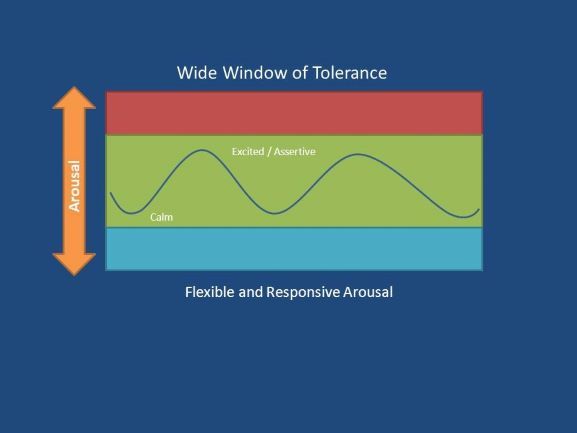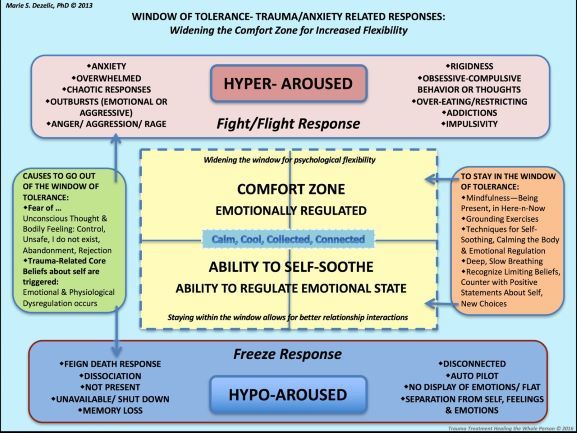Being Trauma Informed
Being trauma informed...what does that really mean? It means focusing on the 5 principles – Safety, Choice, Collaboration, Empowerment and Trustworthiness with our children and young people or indeed anyone who may be suffering the affects of trauma. This should be reflected in the physical setting, each and every contact, all relationships and all activities if an organisation is to be truly trauma informed. In this way, we can avoid re-traumatising individuals by removing things that may trigger behaviours or memories of the initial traumatic event/s.
As many of you will recognise, we have children and young people (and indeed adults) in our schools who can struggle within our environments. The evidence indicates that children and adults who have experienced 4 or more Adverse Childhood Experiences (ACEs) can effectively be traumatised, causing them to find some situations a challenge or indeed display major psychological affects. Our children are communicating their needs through their behaviours, often being unable to express those verbally or even realise this is what is happening. Their brains may not have developed as expected, as they have learned to survive their traumas meaning that their brain stem has taken over promoting a fight, flight or freeze response in order to survive. This type of developmental trauma can be repaired through a ‘bottom up approach’ and all supporters working together to enable the brain to repair itself. This may mean working on basic functions for fear responses (Fight, flight or Freeze when danger is perceived) to be regulated, promoting a feeling of safety and security or specific work around behaviour control and emotional resilience. Both the areas of the brain that control these functions, that is the brainstem and limbic brain, must be working well before learning can even begin.

To understand the behaviour of a traumatised child it is helpful to understand that each child has a unique ‘window of tolerance’. When they are within their window they can think, love, learn, empathise, have fun, explore, reflect and use words to describe their feelings. But if they feel pushed to either the upper level (hyper-aroused) or the lower level (hypo-aroused) then their thinking brain goes offline and they cannot learn. They experience a neuro-chemical change, they swing into their brainstem and they feel distress. There will be unique triggers for each child whether it is break time, numeracy work, tests, a group exercise or a change in routines that pushes them outwith their window of tolerance causing either aggressive or anxious reactions, obsessive or controlling behaviours (hyper-arousal) or freeze mode where they are withdrawn, quiet, emotionless (hypo-aroused). Both these modes have physical symptoms that can be evident e.g. increased heart rate, shaking or even pain. Children who have experienced trauma have a much smaller window of tolerance, meaning they can spend most of their time swinging between Hyper / Hypo aroused states.
Our role is to help children expand their window of tolerance and this can be done by teaching them how to notice, communicate and manage their emotions, that is, how to bring themselves back into their personal window of tolerance – partly through nurture.

By regulating the feelings for them and with them, we can show them that their emotions are not dangerous and can be tolerated. Identifying triggers and creating a safe environment is another way to help those with developmental trauma.
Some children / adults may have a wide window of tolerance meaning they can manage their traumas much more effectively but if they have a narrow window of tolerance they can experience over arousal or indeed under arousal (numb and switched off (numb and disassociated). For those who function in the blue or red zone (fringes of the window of tolerance) this can also lead to substance misuse, aggression and acts of violence or self harm.
Do certain situations trigger the trauma response from a person or child? How can we manage this...how can we help youngsters to stay in their ‘window’ of tolerance? Possibly more focus on brain development with youngsters, can help them to see these effects in their behaviours and begin to allow them to find ways of dealing with it. Organisations can have windows of tolerance too, so we must ensure that tolerance is widened to enable staff to affect support more effectively, to regulate responses and relate to where they are, then they can work on reasoning and recognising triggers and trauma. For example, at children’s panel meetings... how do we support youngsters and avoid re-traumatisation? We must enable our care experienced youngsters to feel empowered in these meetings, to feel safe and able to communicate what they want or need.
We should resist re-traumatising, avoid triggers...sights, sounds, smells anything that can remind someone of a trauma they have experienced. People can be triggered unintentionally but we need to be aware of this in our service as some people may avoid places or organisations or systems that can trigger responses for them.
Why does all this matter? Adversity is not destiny ...children/people do recover from trauma so we need to ensure we provide support that is appropriate. We should assume resilience; meet practical needs / remove barriers to recovery, enable and resource; encourage support from a trusted adult, family or friend; signpost professional practical and emotional support if other networks are toxic; identify and signpost interventions if trauma is unresolved, e.g. something that is natural followed by selective and targeted intervention of those who appear to be showing signs of long term issues.
Ultimately we strive to provide the most appropriate environment for all our learners and staff, whether suffering from the affects of trauma or not, so that they can learn. The complexities of dealing with individual trauma or ACEs falls to us to support and help those learners move forward and realise their potential.
Fiona Dunlop
[1] Fallot and Harris 2009: Community Connections Self Assessment and Planning and Protocol.
[2] Beacon House.org.uk
[3] Sandra Bloom
